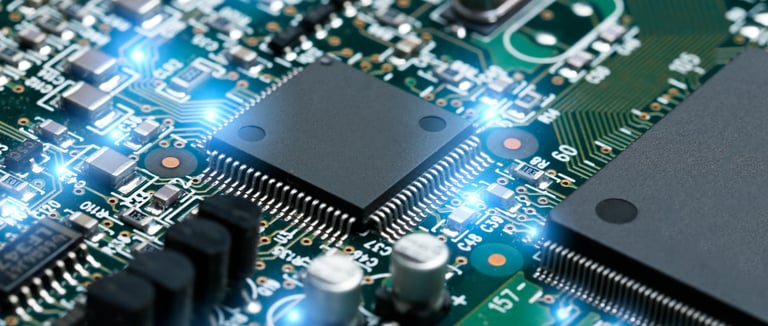Cloud GPUs vs. On-Prem GPU Servers: A Cost, Performance, and Compliance Analysis for Indian Enterprises
Cloud GPU - Optimization and cloud economics
GPU
6/27/20252 min read


Cloud GPUs vs. On-Prem GPU Servers: A Cost, Performance, and Compliance Analysis for Indian Enterprises
The rapid adoption of AI/ML workloads has forced enterprises to rethink their compute infrastructure. With newer regulations in INDIA, enforcing stricter data localization norms, businesses must balance cost efficiency, performance, and compliance when choosing between cloud-based GPUs and on-premise GPU servers.
We look at following :
1. Cost Optimization: TCO comparison of cloud GPUs vs. buying GPU servers.
2. AI/ML Scalability: How cloud GPUs enable flexible, high-performance AI workloads.
3. DPDP Compliance: Ensuring data sovereignty and PII protection in cloud vs. on-prem setups.
4. FinOps Strategies: Best practices for managing GPU costs in hybrid/multi-cloud environments.
1. Cost Optimization: Cloud GPUs vs. On-Prem GPU Servers
A. Upfront Capital Expenditure (CapEx) vs. Operational Expenditure (OpEx)
- On-Prem GPU Servers:
- High initial investment: An NVIDIA H100 GPU costs ₹25-30 lakhs per unit in India .
- Additional costs:
- Data center space, cooling, power infrastructure.
- IT staff for maintenance and upgrades.
- Depreciation (~3-5 years before hardware becomes obsolete).
Best for: Enterprises with predictable, long-term AI workloads (e.g., large-scale LLM training).
- Cloud GPUs (Pay-as-you-go):
- No upfront cost: Rent NVIDIA H100 GPUs for $2.5/hour (~₹200/hr)
- Flexible scaling:
- Spot instances (up to 90% discount for interruptible workloads).
- Autoscaling for variable demand (e.g., batch inference vs. real-time AI).
Best for: Startups, SMBs, and enterprises with sporadic or evolving AI needs.
Our PoV : Cloud GPUs win for variable workloads, while on-prem is better for sustained, high-throughput AI training—but hybrid models (e.g., cloud bursting) can optimize both.
2. AI/ML Processing: Why Cloud GPUs Are a Game-Changer
A. Performance & Accessibility
- Cloud providers offer GPUs with:
- High-speed interconnects (NVLink, PCIe Gen5).
- Distributed training (multi-node setups for trillion-parameter models).
B. Use Cases Where Cloud GPUs Excel
1. Generative AI (LLMs, Diffusion Models) – Scale inference dynamically.
2. Drug Discovery (Bioinformatics) – Burstable compute for molecular simulations.
3. Edge AI (5G + IoT) – Process data near source with cloud-edge GPU clusters.
C. Avoiding Vendor Lock-in with Multi-Cloud GPUs
- Strategy: Use Kubernetes + Kubeflow to orchestrate GPU workloads across Clouds
3. Data Confidentiality & DPDP Act Compliance
A. Data Residency Requirements
- DPDP Act mandates:
-Local storage of PII data (with exceptions for cross-border transfers).
- Algorithmic transparency (explainable AI frameworks under development) .
Solution:
- Sovereign Cloud GPUs (e.g., AceCloud) host data in India.
- Private Subnets + Encryption (AWS/GCP India regions).
B. Security Advantages of Cloud vs. On-Prem
C. Case Study: Indian AI Startup Using Cloud GPUs Securely
- Problem: A healthtech startup processing patient MRI scans needs DPDP compliance. Solution:
- Hosts model on Enterprise DC in Mumbai (Local Zone)
- Anonymizes data before training (synthetic data generation via IIT Roorkee project) .
- Uses confidential computing for encrypted AI processing.
4. FinOps Strategies for Cloud GPU Cost Optimization
A. Right-Sizing GPU Instances
- Rule: Match GPU type to workload:
- NVIDIA L4/L40S – Light AI inference (~₹50/hr).
- H100 – Heavy training (~₹200/hr).
- Spot Instances – Non-critical batch jobs (70% savings).
B. Monitoring & Governance
- Tools:
- AWS Cost Explorer, Azure Cost Management.
- Kubernetes GPU Metrics (Prometheus + Grafana).
- Policies:
- Auto-shutdown idle GPUs.
- Budget alerts at 80% utilization.
C. Hybrid Cost Model
- On-Prem (Baseline Load) + Cloud Bursting (Peak Load).
- Example: A fintech firm runs fraud detection on-prem but scales to AWS during festive sales.
Conclusion: Cloud GPUs Are the Future (With Caveats)
- For most Indian enterprises, cloud GPUs offer lower TCO, better scalability, and built-in DPDP compliance.
- Exceptions:
- Hyperscale AI firms (e.g., Sarvam AI) may prefer on-prem H100 clusters .
- Defense/PHI workloads may require air-gapped GPU servers.
Ready to model your GPU TCO? Drop us a line at info@ciphersmith.com
Solutions
Optimizing Cloud Costs efficiently and helping Cloud Teams with Technical Resources.
Expertise
© 2025. All rights reserved.
Reach US
Drop us an email at : info@ciphersmith.com
